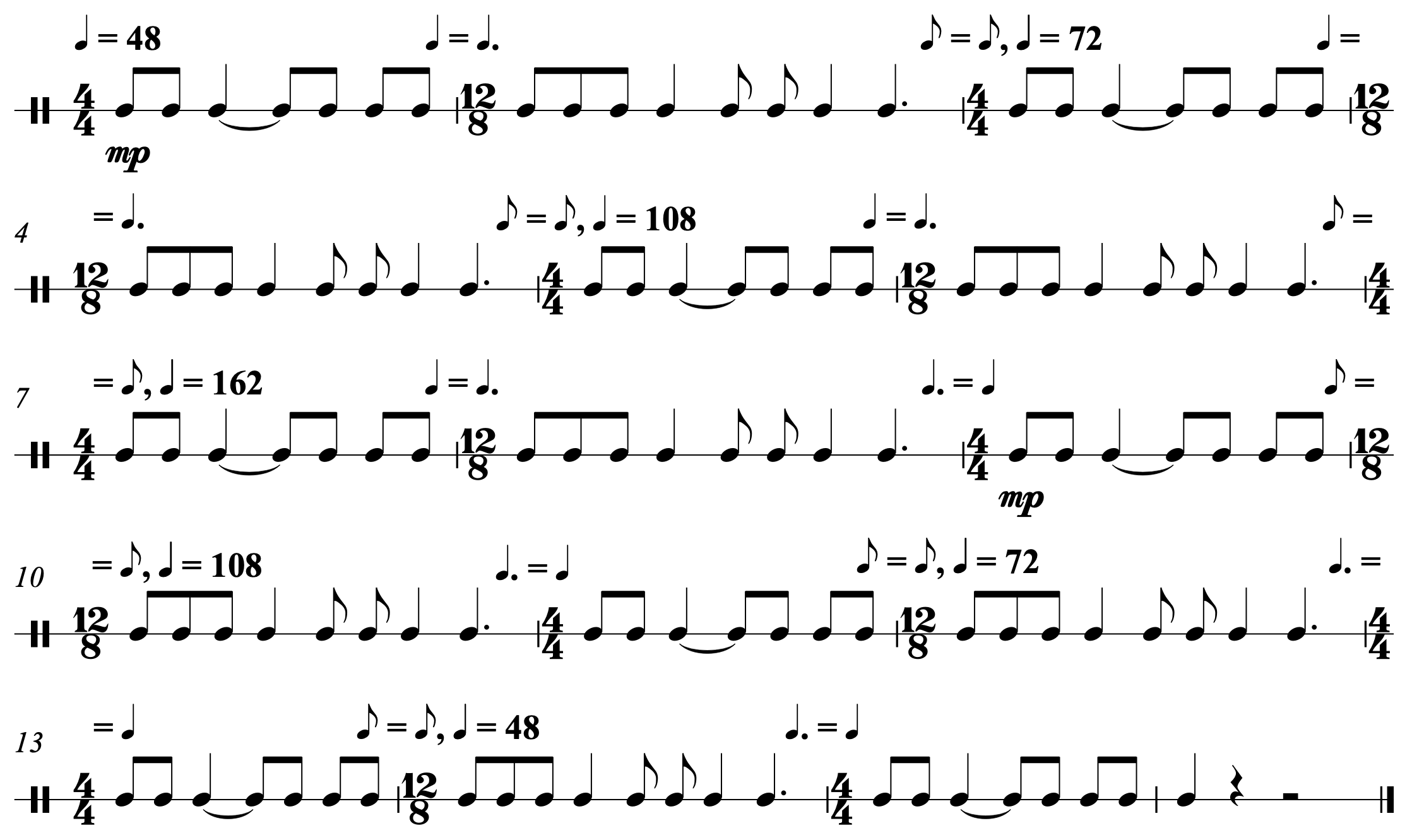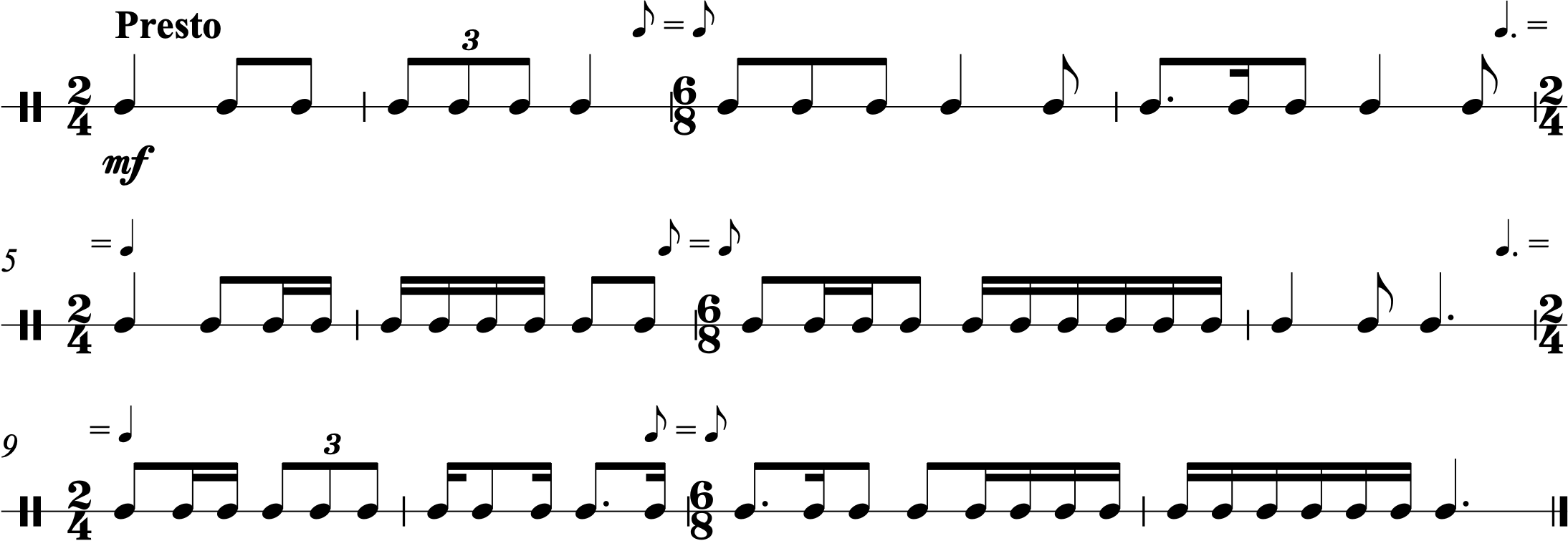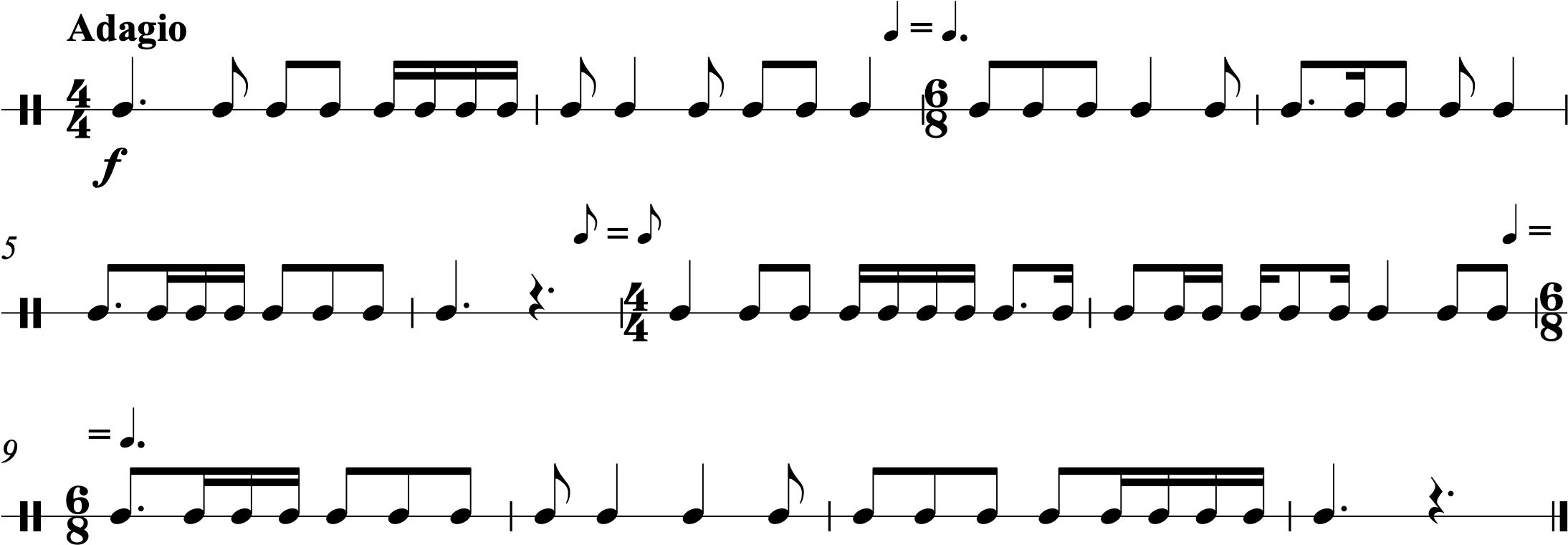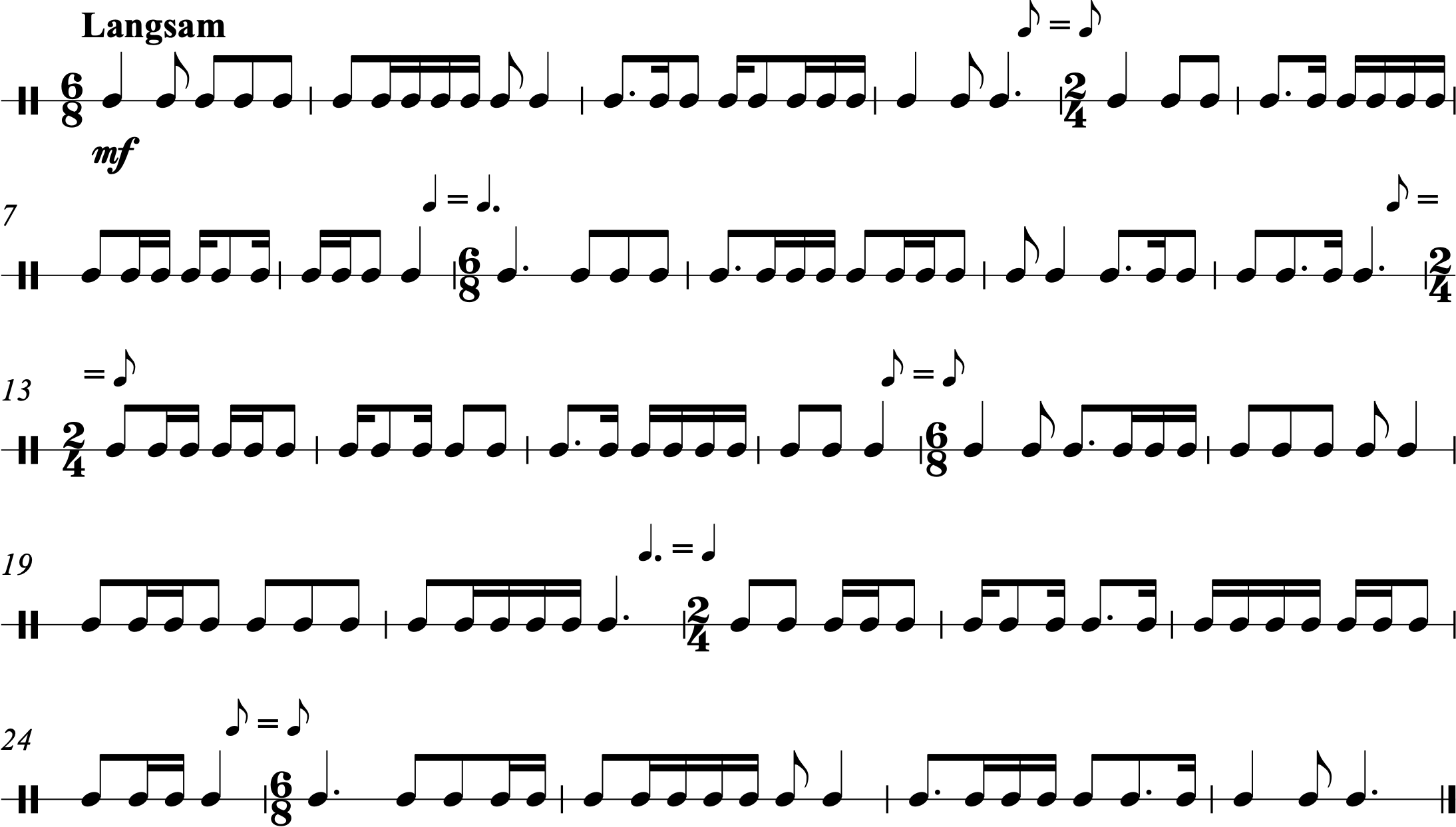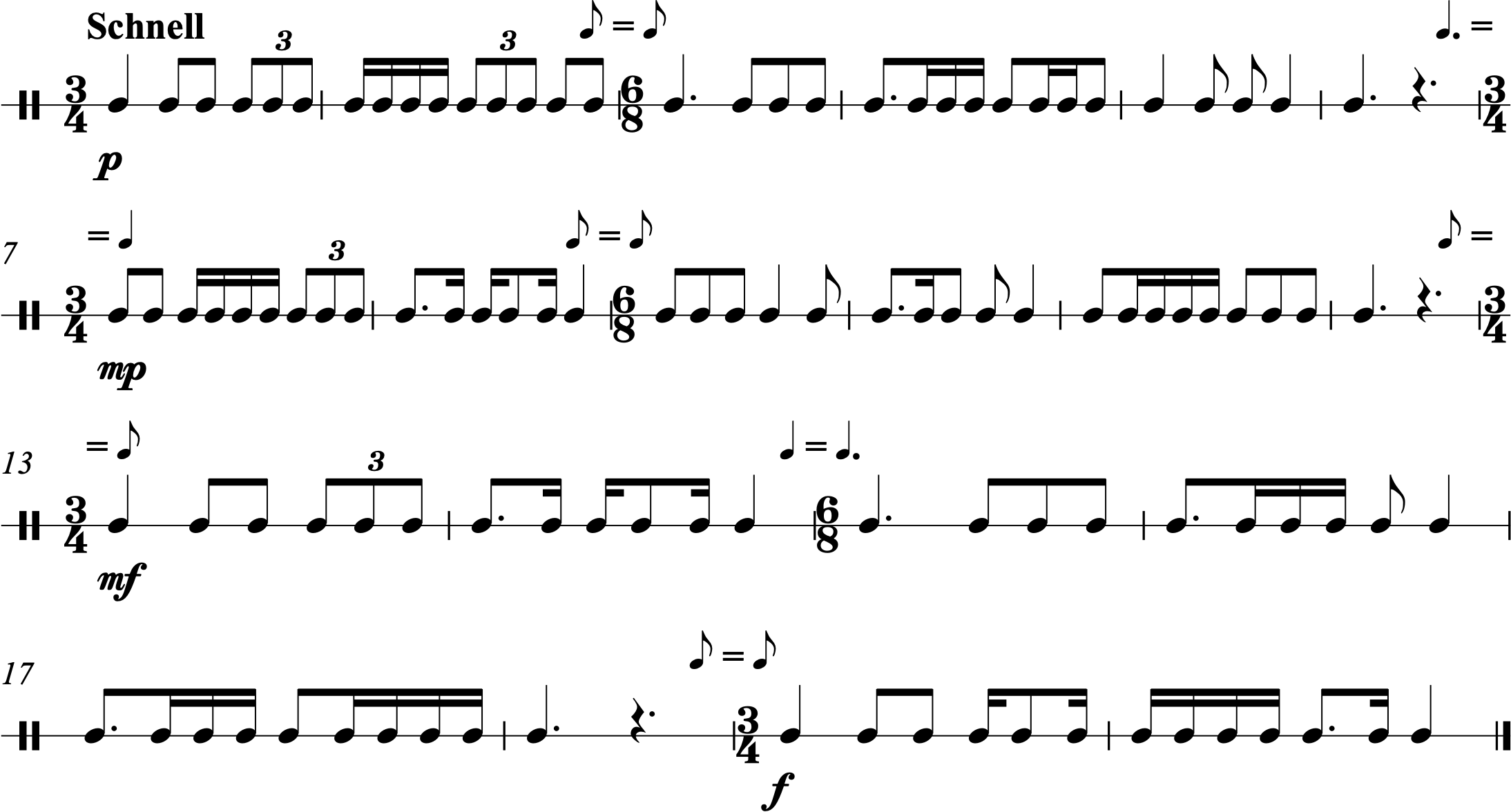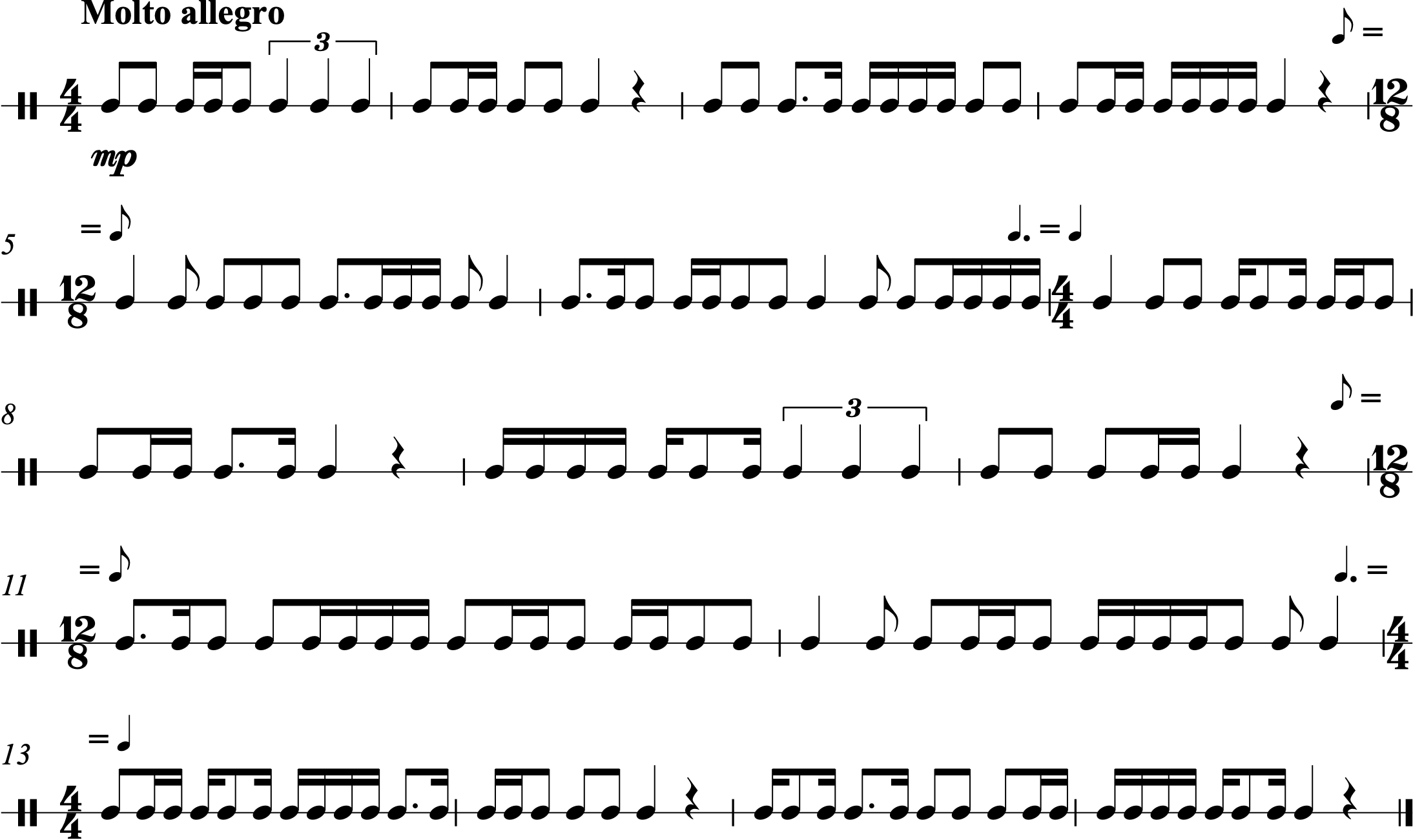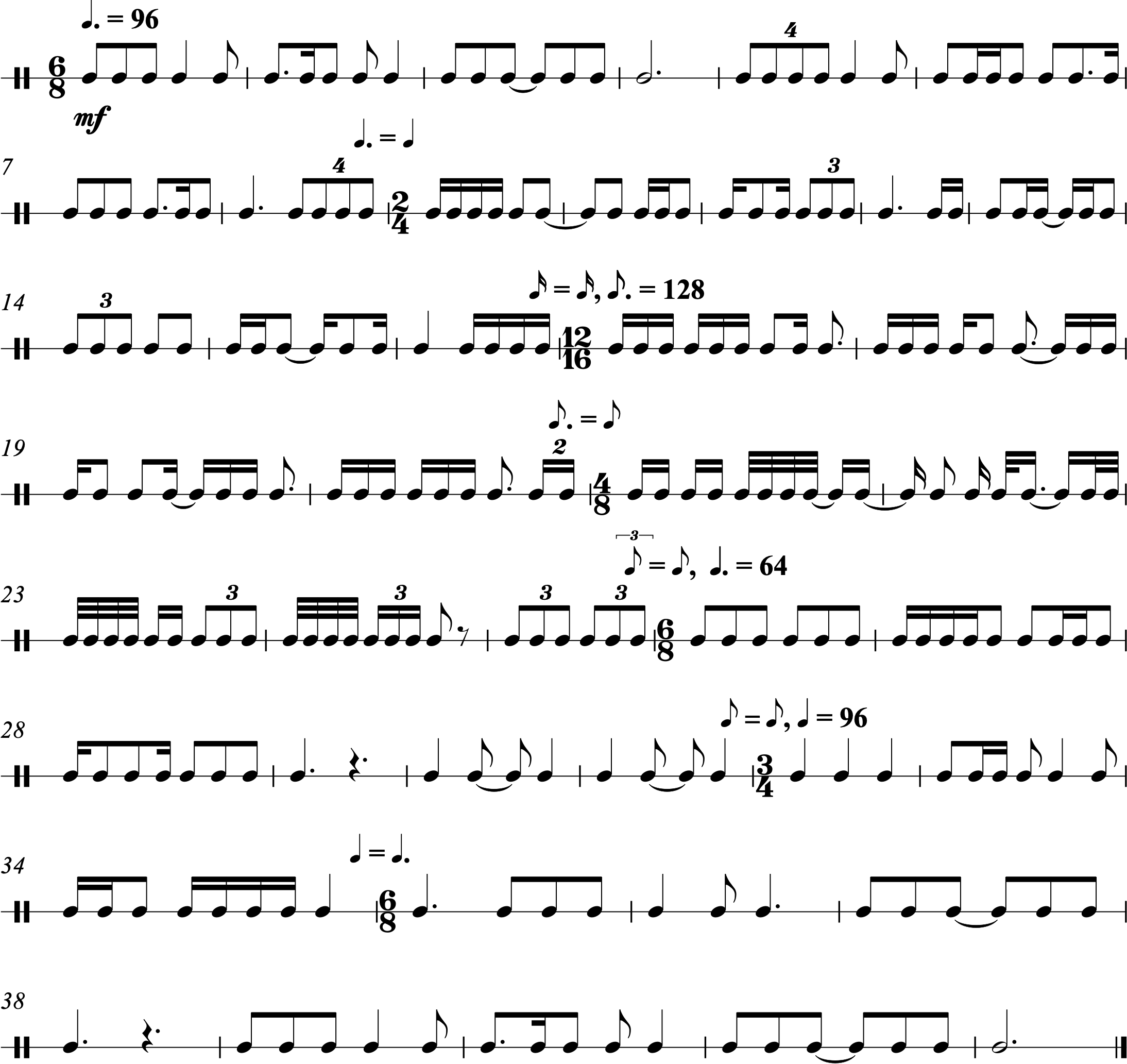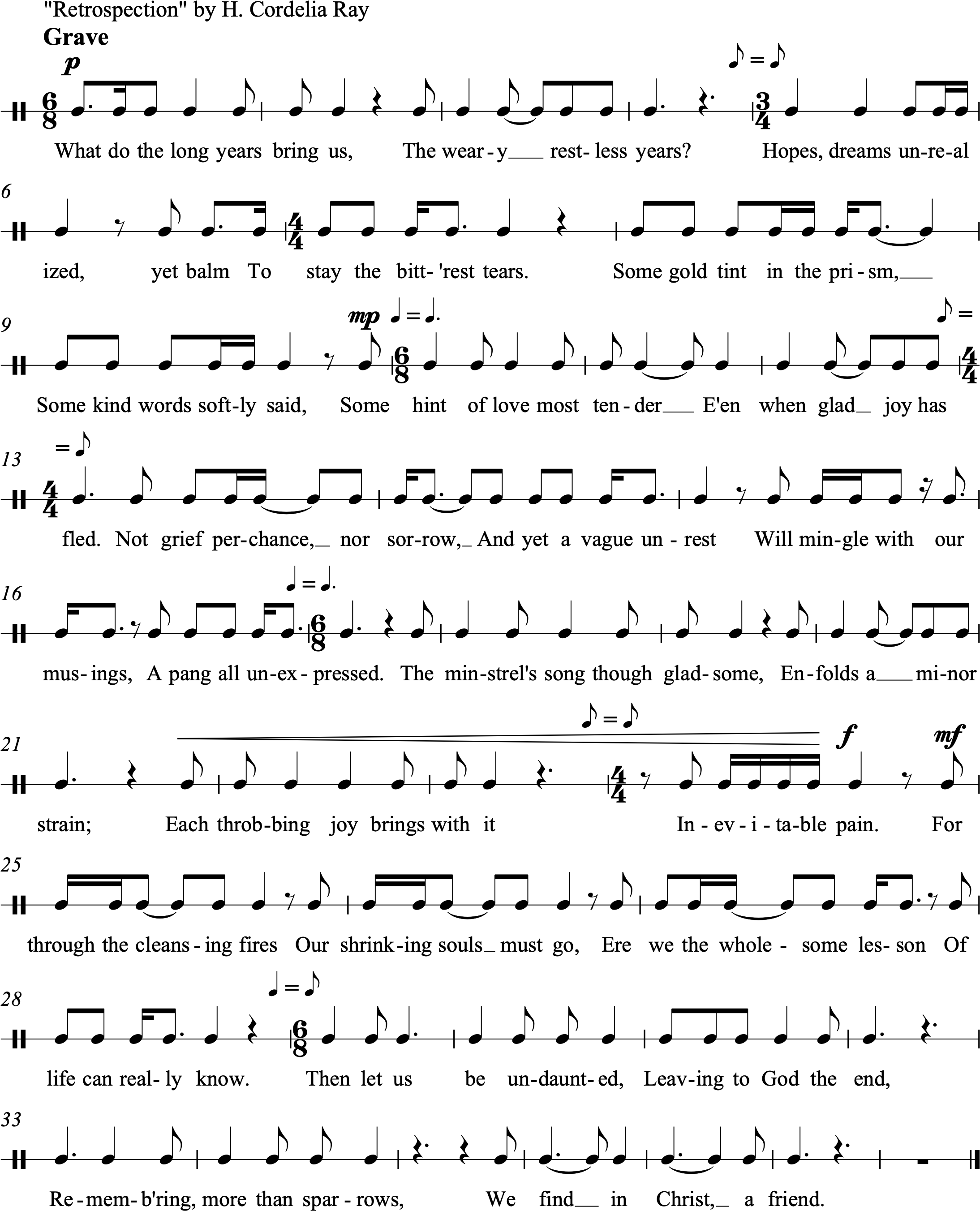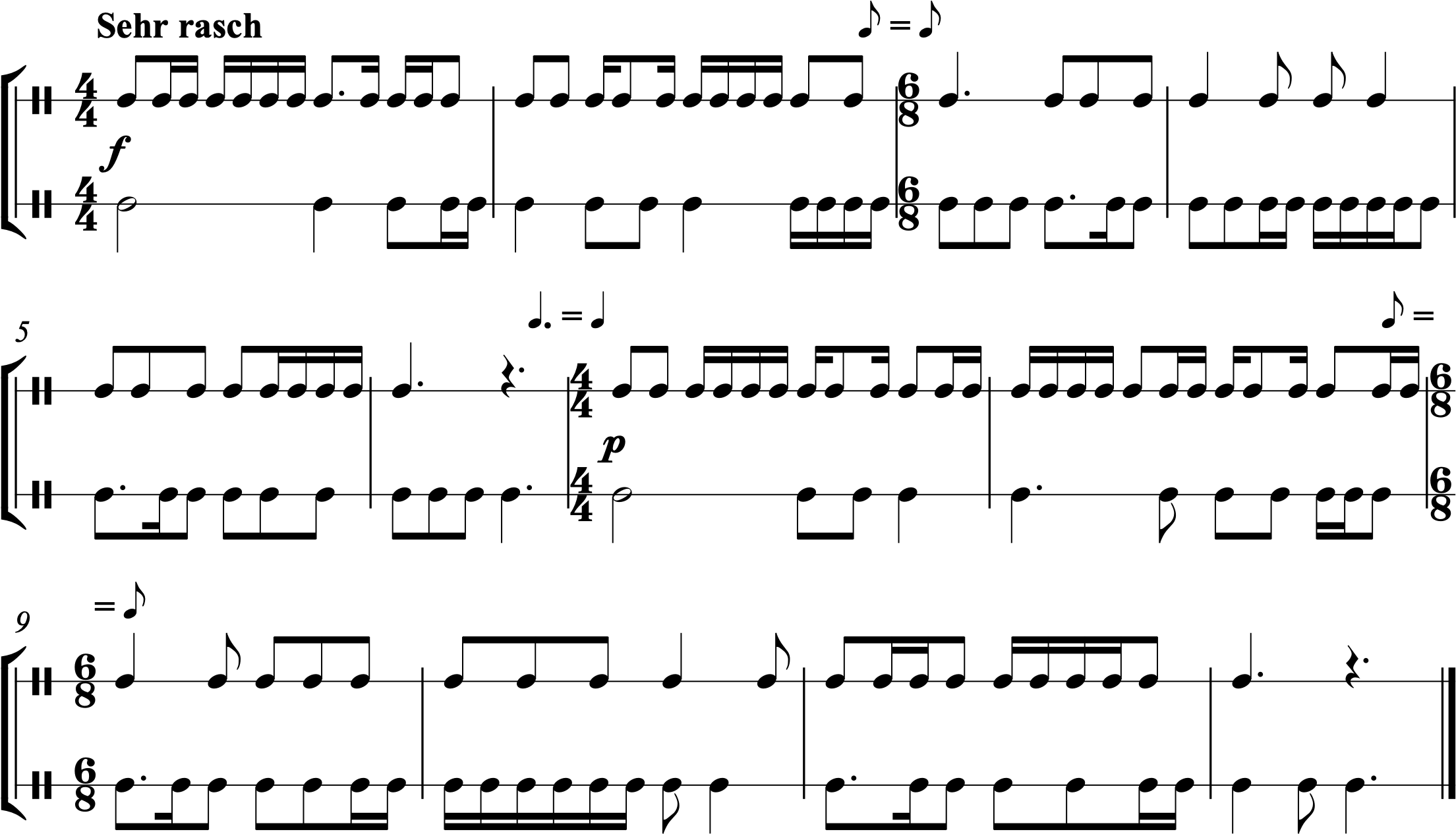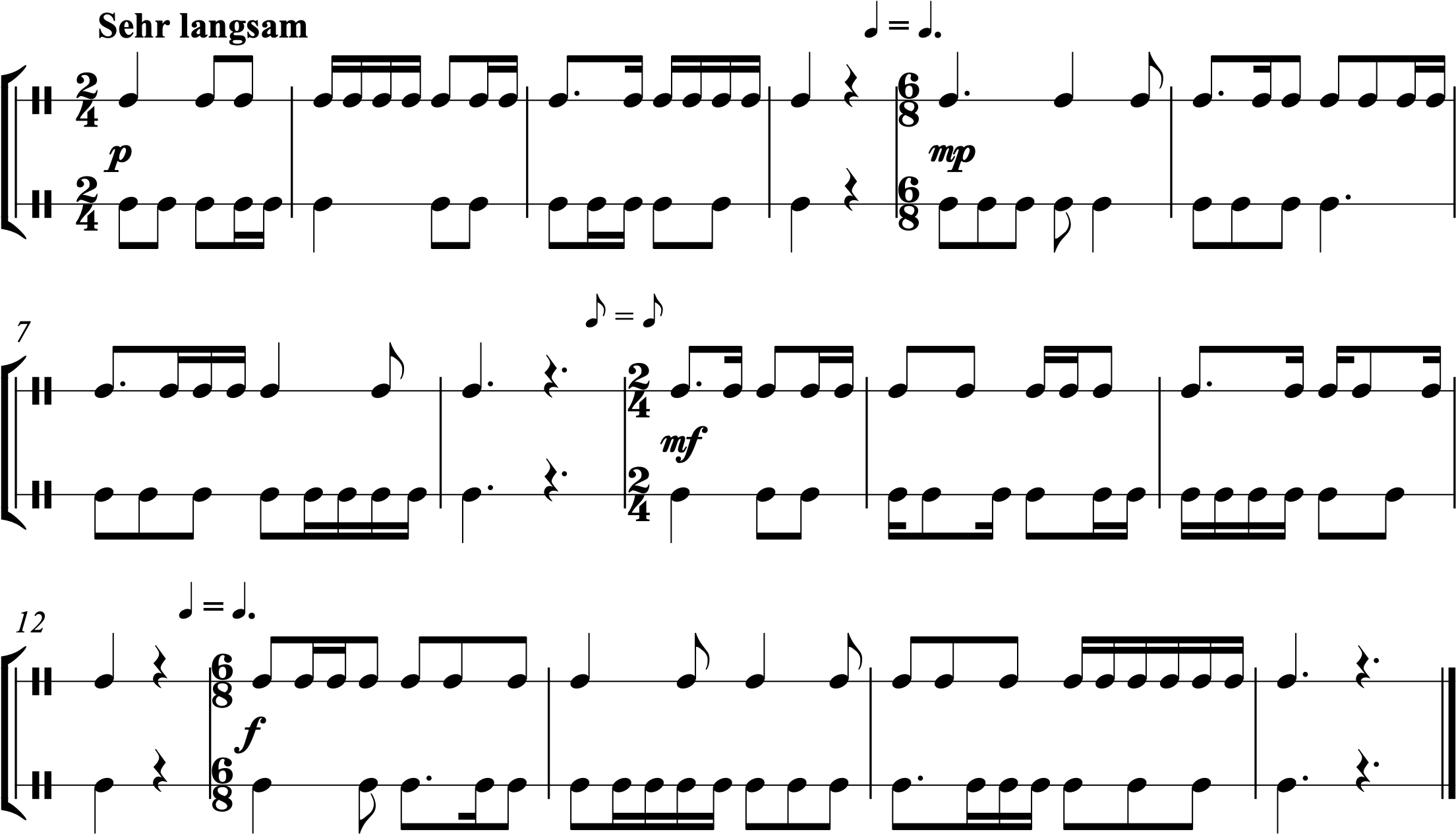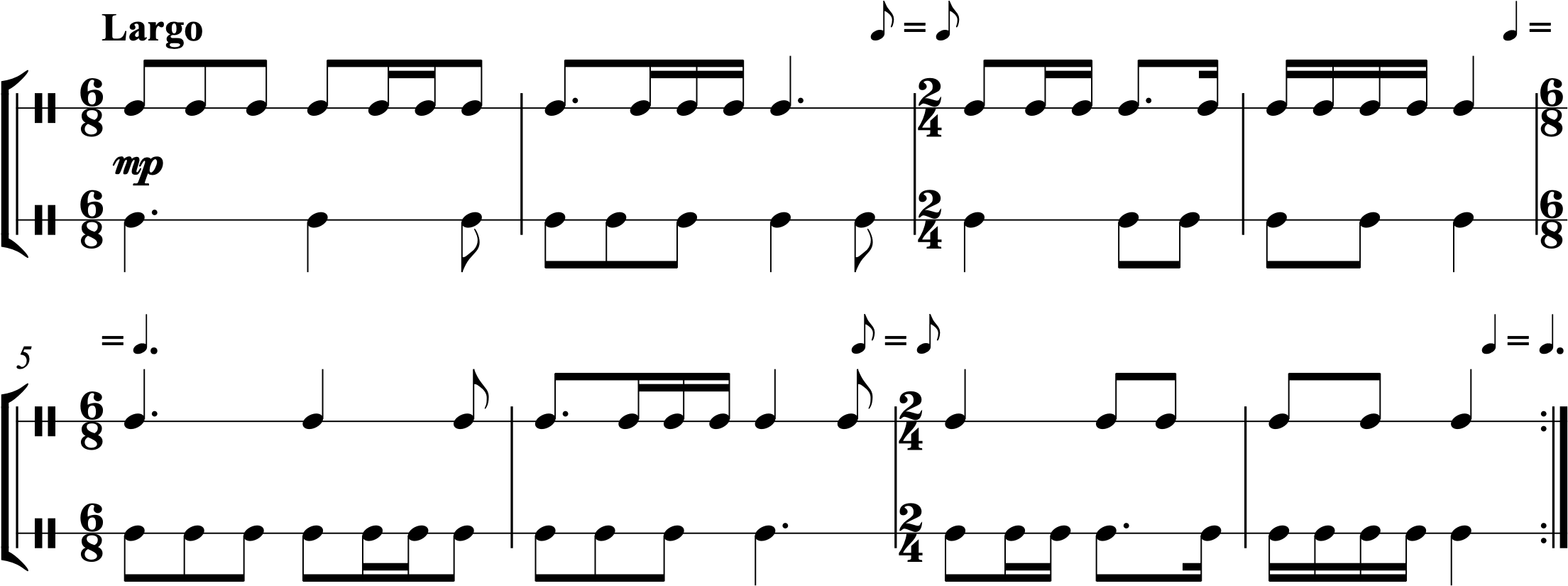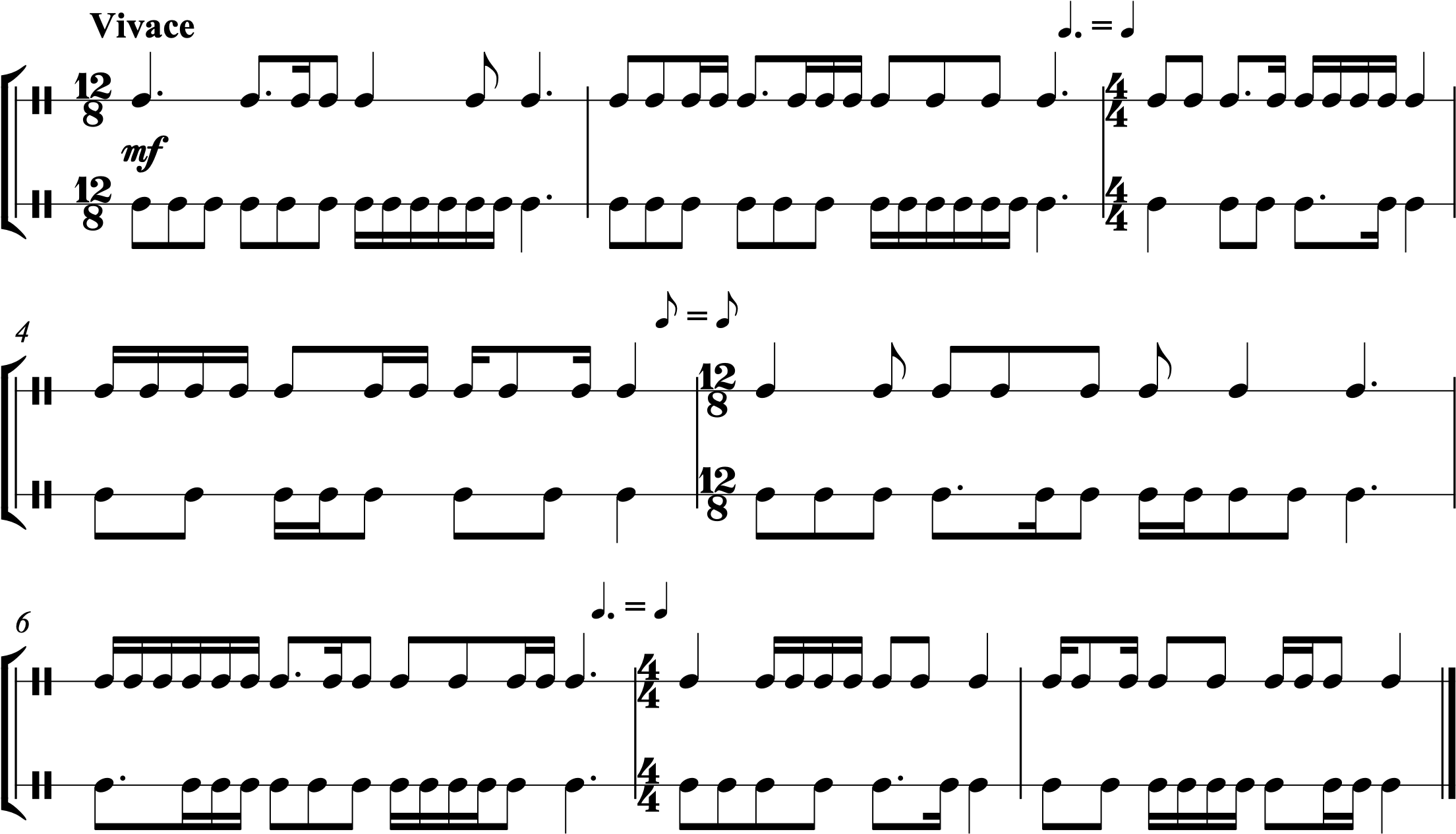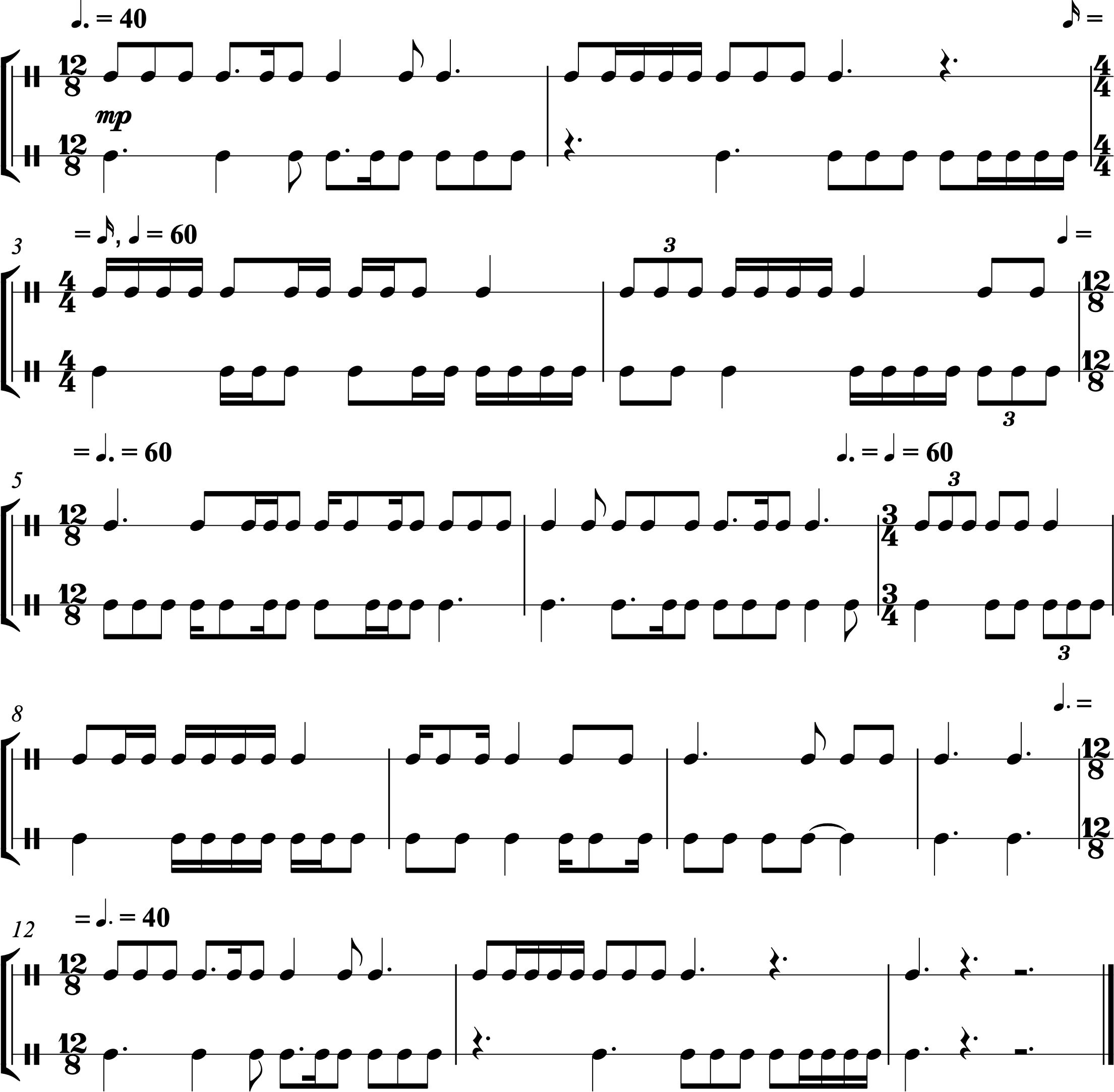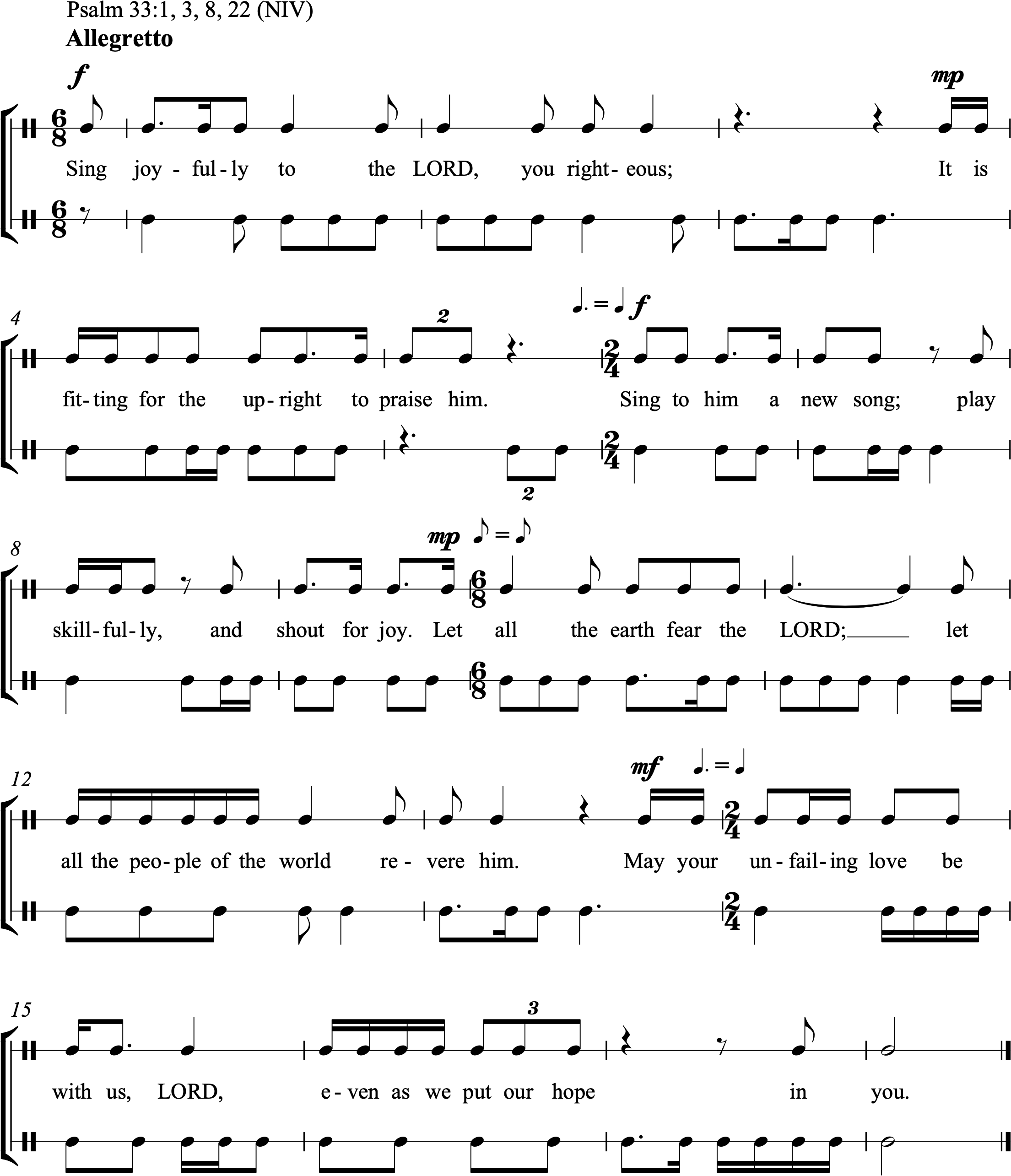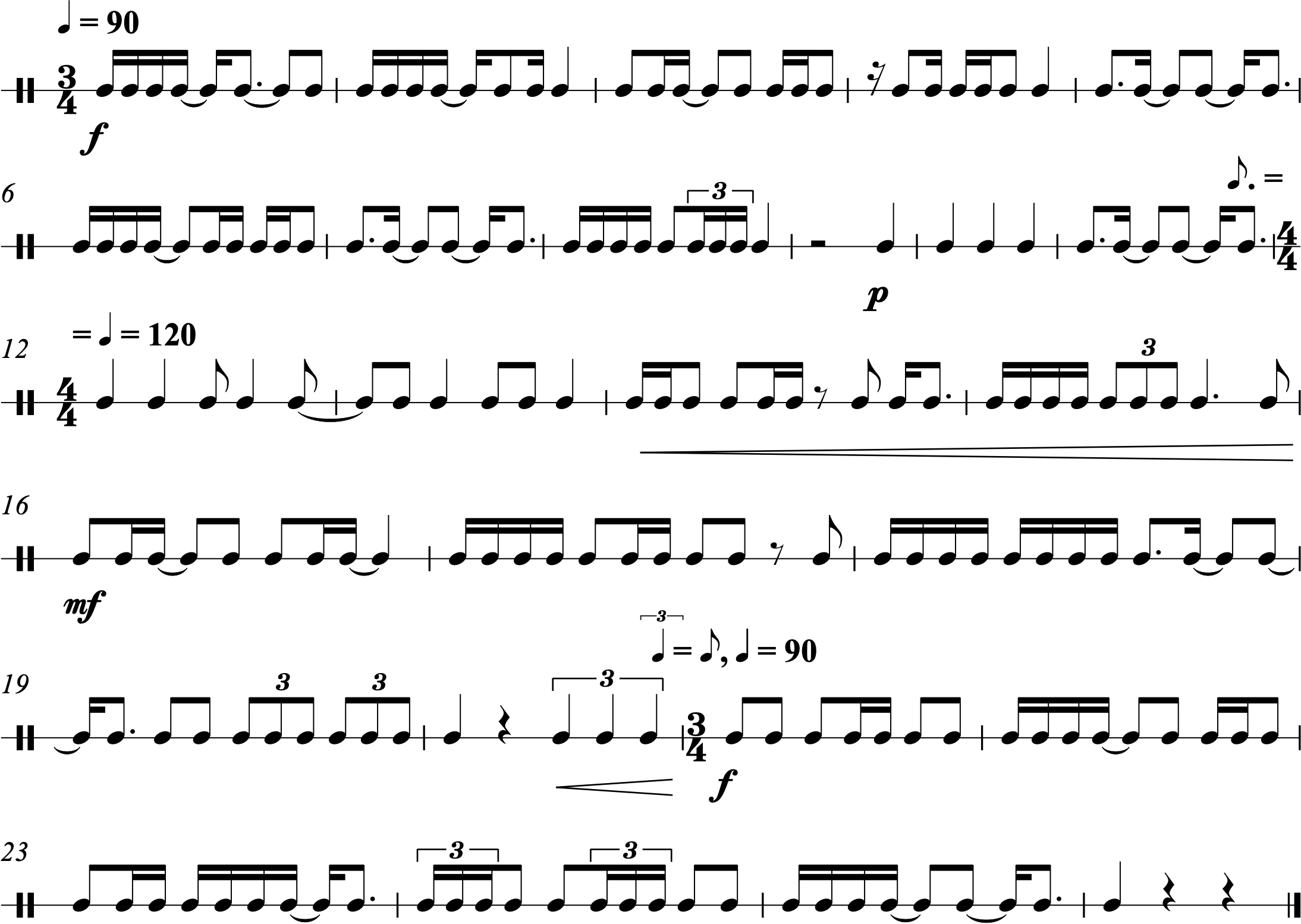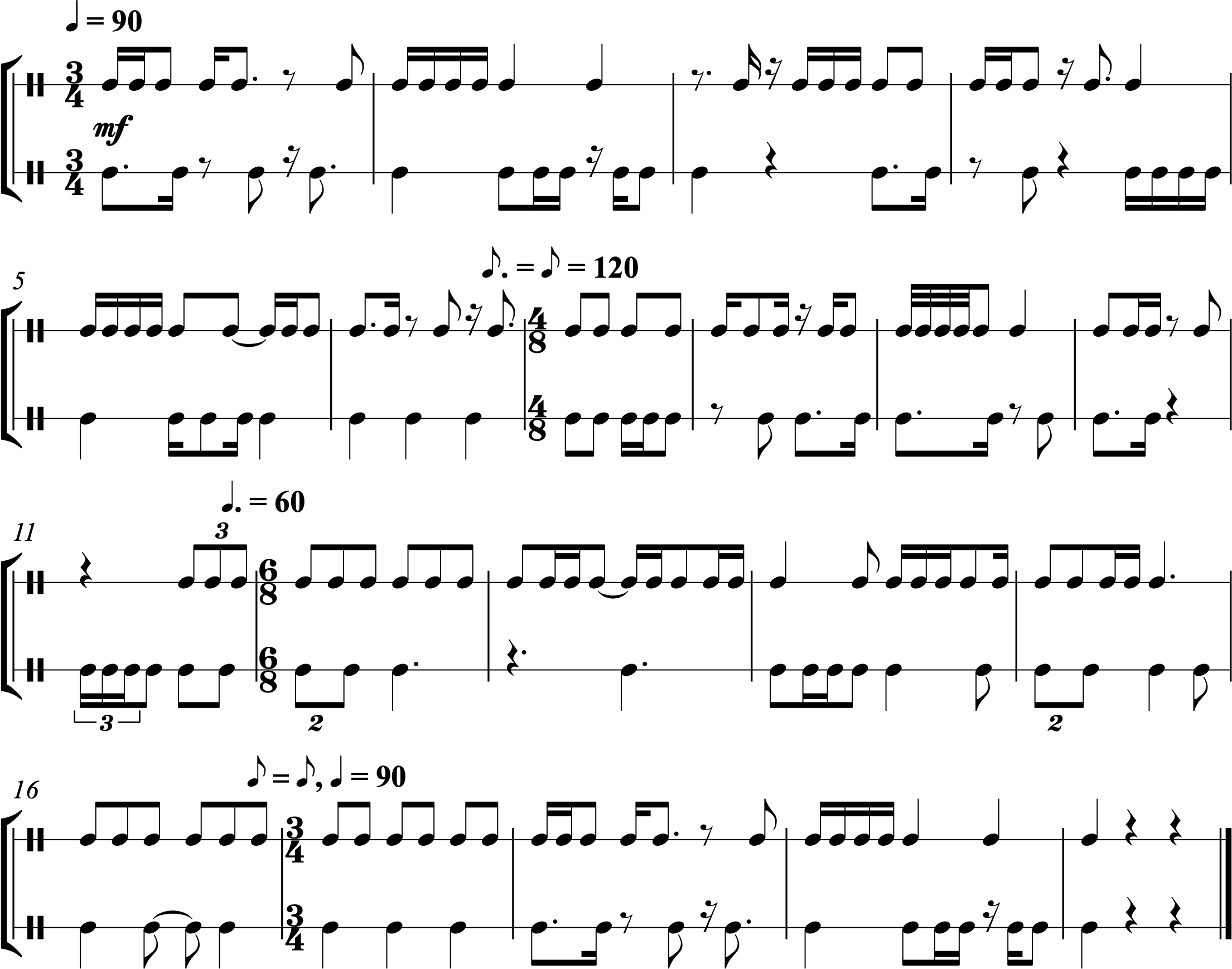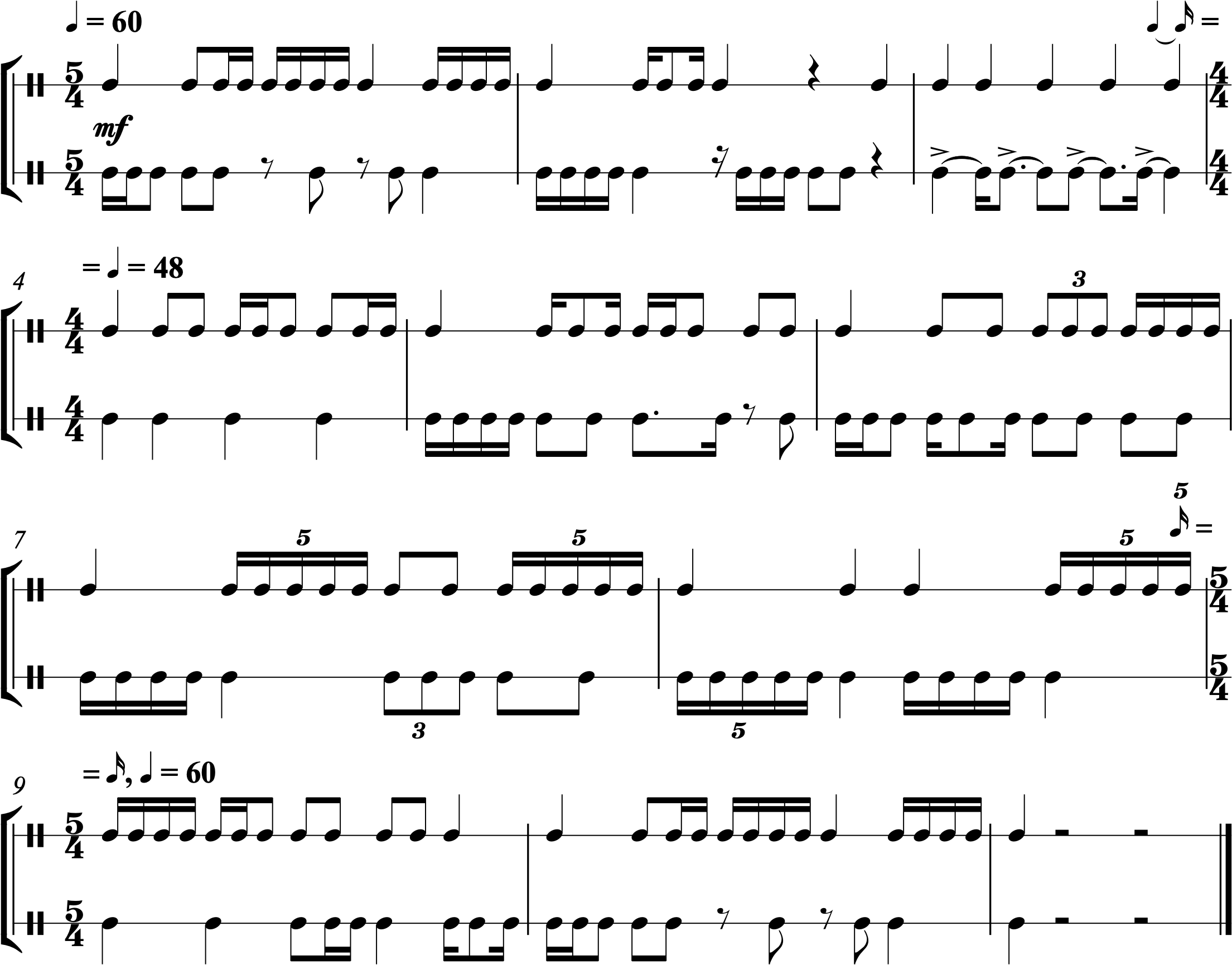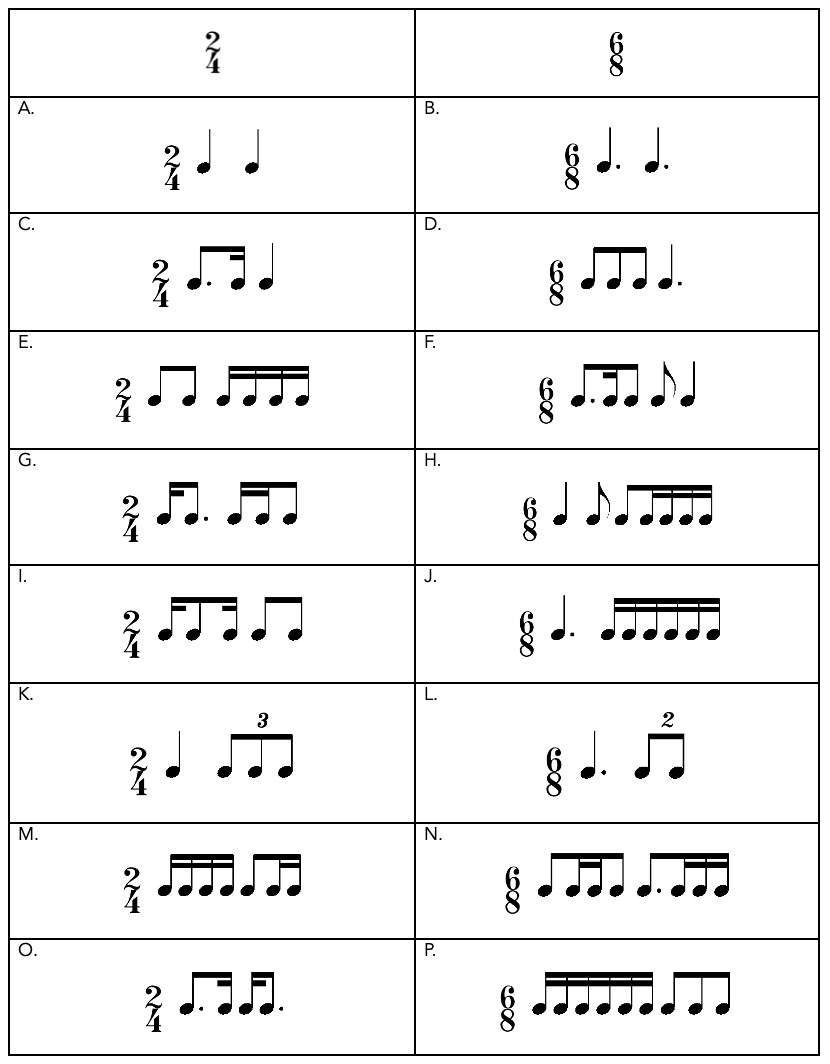Chapter 23: Metric Modulation
About This Chapter
About This Chapter: In this chapter, we will explore metric modulation. You probably recognize the term “modulation” from theory class, where it most typically refers to changing the key of a piece. In contrast, the term “metric modulation” describes music in which the tempo changes through specific rhythmic values that play one role in the old tempo and a different role in the new tempo. By pivoting through a specific rhythmic value, the tempo change is both smoothed out and easier to perform precisely. You can think of metric modulation as the tempo equivalent of common-chord modulation. Although we’ll be using the term metric modulation, you might sometimes see it referred to as “tempo modulation” instead. This makes sense, since the tempo is changing, but we’ll stick with metric modulation since it is used more commonly.
We’ve already learned the tools we’ll need to perform metric modulations. In Chapter 18, we explored techniques for changing from simple meters to compound meters and vice versa. At changes in time signature, we often saw indications in the score telling us that a certain note value in the old time signature was equal to some note value in the new time signature (for example, eighth = eighth).
These indications can be used to change tempo. In the following example, the first time we’re in 2/4 (measure 1), the tempo is quarter = 180. By the time we get back to 2/4 (measure 3), the tempo is quarter = 120. How does this happen? In measure 2, as we switch from 2/4 to 6/8, we are told to keep the eighth note constant. Because the beat in 6/8 has three eighth notes, not two, the beat has to expand, slowing down the tempo. As we move into measure 3—jumping back into 2/4—we don’t reset back to the original tempo, but instead keep the new, slower tempo. In measure 4, we once again keep the eighth note constant.
Because these tempo changes need to be precise, it’s very important to figure out where our attention should be—when should we focus on the eighth-note pulse and when should we focus on the beat? The figure below reproduces the earlier example, but with annotations below the staff to show where our attention needs to be as we navigate the tempo changes.
Section A—Modulation through the beat or division
Practice
Practice A:
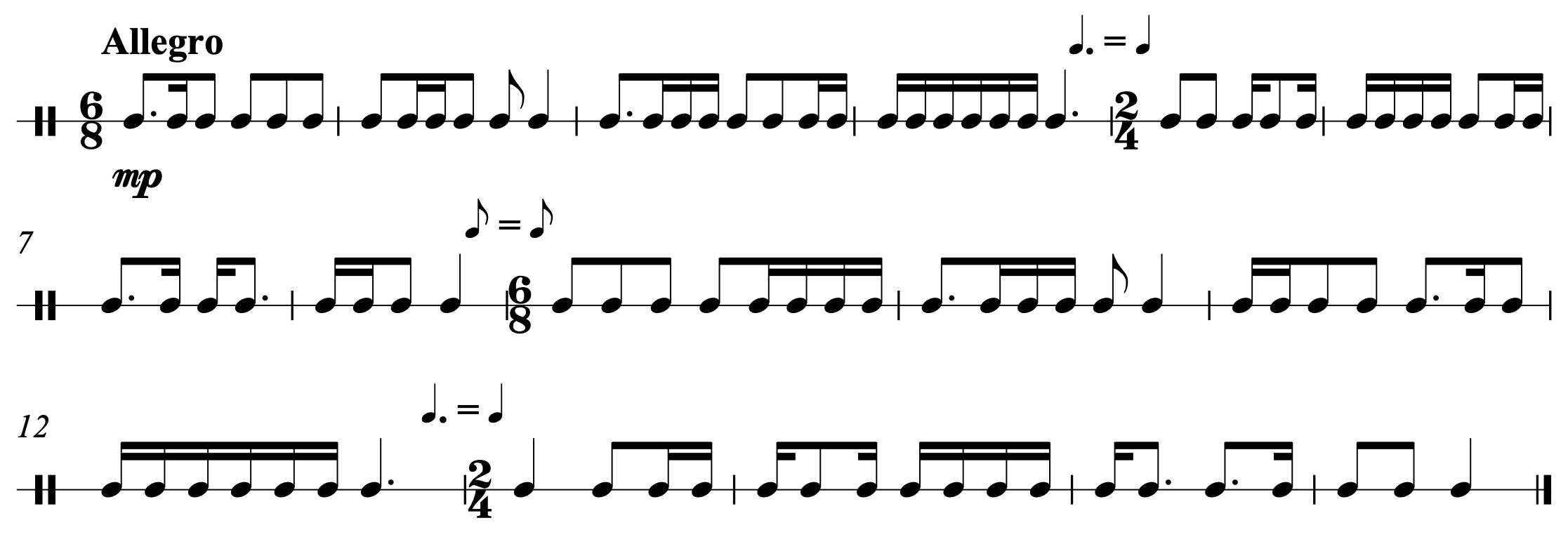 Practice by performing along with this audio file, which features a metronome click and the notated rhythm. You will hear two measures of wood block to establish the tempo before the exercise begins.
Practice by performing along with this audio file, which features a metronome click and the notated rhythm. You will hear two measures of wood block to establish the tempo before the exercise begins.
Next, try performing along with this audio file, which features the notated rhythm but no metronome click. You will hear two measures of wood block to establish the tempo before the exercise begins.
1.
2.
3.
4.
5.
6.
7.
8.
9.
10.
11.
Section B—Two-part rhythms featuring modulation through the beat or division
12.
13.
14.
15.
16.
17.
Section C—Modulation through other means
18.
19.
20.
21.
22.
23.
24.
Section D—Two-part rhythms featuring modulation through other means
25.
26.
27.
Rhythmic Cells
- For general suggestions on how to use these rhythmic cells, see Appendix: How to Use Rhythmic Cells.
- The left column features measures of simple duple meter (2/4), while the right column features measures of simple compound meter (6/8). Combine measures from each of the columns together to practice metric modulation. Vary whether you keep the beat constant (quarter = dotted quarter) or the division constant (eighth = eighth) in order to produce the tempo changes of metric modulation.
Rhythm in Context
Rhythm in Context example coming soon!
Citations
Poem:
- H. Cordelia Ray (1852–1916), “Retrospection,” public domain. From Poems, published 1910, by Grafton Press, New York, NY.
Psalm:
- Scriptures marked “NIV” taken from the Holy Bible, New International VersionTM, NIVTM
- Copyright © 1973, 1978, 1984, 2011 by Biblica, Inc. Used with permission. All rights reserved worldwide. The “New International Version” is a trademark registered in the European Union Intellectual Property Office (EUIPO) and United States Patent and Trademark Office by Biblica, Inc. The “NIV”, “Biblica”, “International Bible Society” and the Biblica Logo are trademarks registered in the United States Patent and Trademark Office by Biblica, Inc. Used with permission.
Rhythm in Context:


